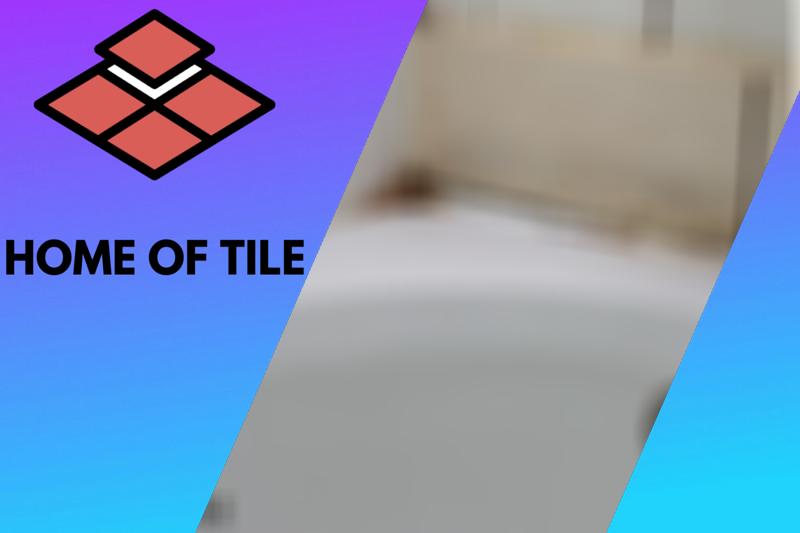How To Clean Mold in Shower Grout Naturally. What pros say
If you own a shower, there’s a good chance you’ve had mold in the grouting at some point. This is because warm, moist areas are the ideal breeding ground for mold, and even if you ensure that your bathroom is well ventilated, mold will inevitably creep in. The good news is that it’s pretty easy to clean mold in the shower with products you probably already have in your home.
Here is how to clean the mold in your shower grout naturally:
- Consider your options
- Get your safety gear
- Clean with vinegar
- Clean with baking soda

Continue reading to learn about each of these methods. I’ll also help you identify which option is best for you.
Contents
1. Consider Your Options
There are several methods available to clean mold from your shower grouting, and you should make sure you’re choosing your method carefully. Since shower tiles are made of different materials, how they react to cleaning products you use will vary. Common shower tile materials include porcelain, ceramic, stone, and glass.
While vinegar makes a great cleaner, it is not suitable for stone tiles because it is very acidic. The acidity in vinegar can strip the stone’s color and damage its surface. Baking soda is another popular product used as a cleaning agent, but because it is abrasive, it is not ideal for glazed ceramic or glazed porcelain as it can scratch the surface.
Before you decide on what to use to clean your tiles, make sure that the item you would like to use will be effective and not damage the tiles as a side effect.
2. Get Your Safety Gear
Different kinds of mold have varying levels of toxicity.
Black mold is toxic. Other mold types like greenish or brown mold will probably not kill you, but it can be a severe risk to people with respiratory issues like asthma or who suffer from allergies. Mold exposure can cause a runny nose, headache, or cough for people with no health issues.
Before cleaning the mold, it is best to ensure that the area you are cleaning is ventilated by leaving the windows open.
Always work with gloves on and wear a mask and safety goggles. The mask will prevent you from inhaling mold spores in the air, especially when you scrub at it, as this throws more of these particles up. Wearing safety goggles or glasses protects your eyes from any liquid that splashes back towards your face as you clean.
3. Cleaning With Vinegar
Since vinegar is highly acidic, it will kill mold. Vinegar has a strong smell that many people don’t like, but it will disappear when it dries. If you really can’t stand the smell or would like to add a pleasant scent to your bathroom, you can add a few drops of essential oil to the vinegar. Popular choices are lemon, lemongrass, or lavender.
To clean the mold with vinegar, follow these steps:
● Step 1: Decant the vinegar into a spray bottle.
Start by emptying your distilled white vinegar into a spray bottle. This is the easiest way to apply the vinegar onto the grouting without making a mess and going everywhere.
● Step 2: Spray vinegar on the mold.
Point the spray bottle towards the mold and spray a generous amount of vinegar onto the grouting and tiles wherever you see mold. Make sure you pour enough to cover all the mold.
● Step 3: Let the vinegar dry.
You must give the vinegar enough time to penetrate the mold and kill the bacteria. Leave it for about thirty minutes to an hour. You will know it’s time for the next step when the vinegar is dry.
● Step 4: Scrub with a brush.
Once the vinegar is dry, you will need to go in with a brush. Any bristled brush will work. You can also use an old toothbrush if you don’t have a designated cleaning brush. Gently scrub at the mold – the bristles will lift it from the grouting, making it easier to remove. Don’t apply too much pressure because scrubbing too hard may chip the grouting or scratch the tiles.
● Step 5: Repeat steps two through four.
Depending on how much mold there is, how long it’s been there and how deep-seated it is, you might have to repeat the process of applying vinegar and letting it soak into the mold. If you couldn’t remove or loosen all the mold with the brush during the first pass, spray more vinegar onto the mold and allow it dry for another thirty to forty minutes, and scrub with a brush once more.
● Step 6: Rinse with warm water.
The last step involves wiping the surface with a wet cloth to remove all the mold. Soak a cloth in a bucket of warm water. After you’ve left the vinegar on the mold for a second time to dry, you likely won’t need to scrub it off with a brush, as it should be loose enough to wipe off with a cloth.
4. Cleaning With Baking Soda
Baking soda works wonders at lifting stubborn mold from shower grout. It’s a great option if you’re looking for something this natural and isn’t acidic. Mold that has been left in the shower for a while can develop an unpleasant musty smell. Since baking soda is an amphoteric compound, it does a fantastic job of neutralizing and absorbing foul odors.
Here is how you can clean the mold out of your shower grout with baking soda:
● Step 1: Mix baking soda and water
Begin by making a paste. Place around half a cup of baking soda and a quarter cup of water in a bowl and mix to form a paste. Depending on the consistency, you may need to add more water or more baking soda. You don’t want it to be too runny because it won’t stick to the mold, but if it’s too thick, you will struggle to spread it.
● Step 2: Apply baking soda and leave to absorb
Using an old spoon or spatula, apply the paste to the moldy areas and leave it on for a few minutes so that the baking soda has time to penetrate the mold and break it down.
● Step 3: Scrub the grouting
Use a bristled brush or toothbrush to scrub at the mold to loosen it. Baking soda is abrasive, so be careful not to scrub too hard as this will damage the tiles and grout.
● Step 4: Wipe with a wet cloth
Get a bowl of warm water and soak a cloth in it. Use the cloth to wipe away the baking soda and mold.
Final Thoughts
You can clean shower mold without using harmful chemicals. Vinegar and baking soda both work well, so it is up to you which you prefer to use. Remember, vinegar is acidic and may damage natural materials like stone, while baking soda is abrasive, so avoid using it on surfaces that scratch easily.







